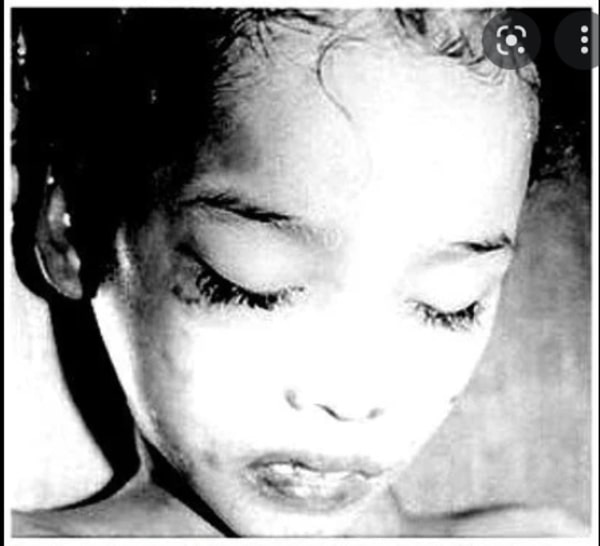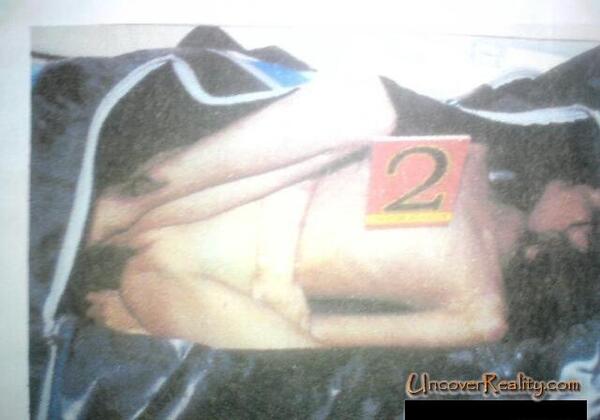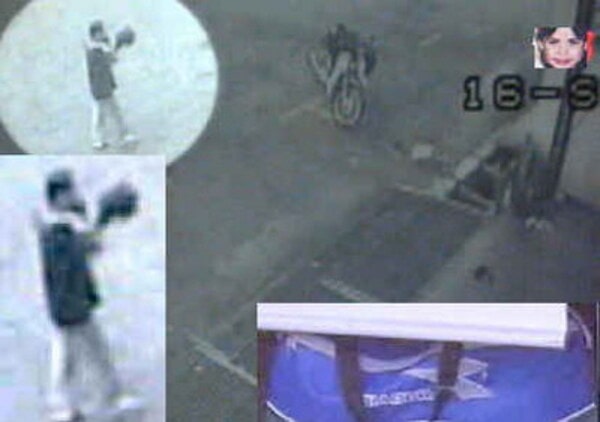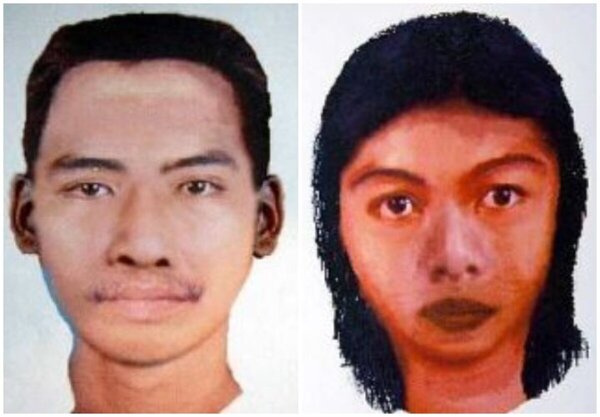368
Trigger warning: This article contains graphic details and photos that may disturb some readers.
KUALA LUMPUR, Malaysia – The murder of Nurin Jazlin Jazimin was so horrific it shocked an entire nation and sparked widespread outrage. And to date, a killer(s) remains free.
Northeast of the city is one of the largest townships in Kuala Lumpur, Wangsa Maju, a former rubber estate established in 1984.
Wangsa Maju is considered one of the best places to live in Kuala Lumpur. It has plenty of shops and restaurants along tree-lined streets. The area is known as a university township due to several universities, including Tunku Abdul Rahman University.
Nurin Jazlin Jazimin, 8, lived with her family in a two-bedroom apartment in Section One, Wangsa Maju. She was born on Sept. 11, 1999, to Jazimin Abdul Jalil and Norazian Bistamin. Nurin has three sisters: Jazshira, Jazrina, and Jazlisa. Nurin was the second oldest sibling and attended Sekolah Kebangsaan (SK) Desa Setapak.
“She was one of a kind, she was mature and cared a great deal about her sisters. If her siblings were arguing, she would be the ‘peacemaker’ and try to resolve the issue,” Jazimin told FMT.
On Aug. 20, 2007, Nurin’s father returned from work and took a nap. It is unclear where her mother and sisters were during this time. While her father slept, Nurin donned a pink dress and left the residence to walk to a night market 500m from her home. Nurin wanted to buy her favorite hair clip.
She usually visited the market with her sisters, Jazshira, 9, and Jazrina, 6, but this particular evening, Nurin went alone. Her family never saw her alive again.
When the little girl did not return home, her parents searched the area for her before going to the nearest police station to report her missing. Police subsequently conducted an extensive nationwide search.
Authorities secured CCTV footage that showed Nurin being forced into a white van, The Rakyat Post (TRP) reported. Several people also witnessed the abduction.
For nearly a month, the authorities had no idea what had happened to Nurin. Then one day, someone made a gruesome find.
On Sept. 17, 2007, Cheng Yan Feng, a Petaling Jaya book distribution company supervisor, found a black and blue Diadora sports bag outside the building that morning. Cheng thought it belonged to Jack Yeoh Huat Lip, the general manager, and left the bag there.
Jack arrived at work around 9 a.m. He saw the bag but insisted it did not belong to him. Regardless, Jack opened the bag and, to his horror, saw human legs. He called the police immediately, and authorities identified the body as a young girl between six and nine. They were sure the girl was Nurin but needed proper identification from her parents.


An autopsy revealed the girl had bruises around her neck, indicating somebody had strangled her. Reports also showed bruises on her hands. But the most horrific finding was a cucumber and brinjal (eggplant) rammed inside the victim’s private parts.
Officials confirmed the victim had been dead six to 24 hours before her body was discovered.
Nurin’s parents rushed to Hospital Kuala Lumpur to identify the body. However, after viewing the body, they denied it was their daughter.
“My heart would not allow me to accept the girl lying there, battered to death, as my Nurin – not without proof,” Jazimin told The Star in 2007.
Another reason for the denial was the body did not bear the injection mark from the mandatory Bacillus Calmette–Guérin (BCG) vaccine given to Malaysian children to prevent tuberculosis. Therefore, police were also doubtful it was Nurin. Instead, investigators speculated the child was a foreigner.
Nurin’s father also pointed out that the victim had a gap between her teeth; Nurin did not.
However, according to the Malaysian police, DNA test results were 99.99% conclusive, and dental records were a 95% match to Nurin.
Between 2007 and 2008, at least four children were abducted and molested in Kampung Baru, near the city center and about 7km southwest of Wangsa Maju.
As with Nurin, the assailant shoved vegetables into the genitals of at least two victims. He also rode a motorcycle. Luckily, he released the victims, and they tried to help the police as much as possible but were unsuccessful.
The suspect in those separate cases is known as the “Kampung Baru molester.” He is still at large, according to reports.
Nurin’s rape and torture murder angered the people of Malaysia, and they demanded police find who was responsible and make an arrest.
As in the Madeleine McCann case, some people insisted the police charge Nurin’s parents for negligence, saying their carelessness resulted in her abduction and murder. “Child neglect is a punishable offense according to the Child Protection Act 2001, but the idea was shunned by citizens and ministers alike,” wrote Dhivya Daniell for TRP.
Shortly after discovering Nurin’s body, the police arrested four males and one female between ages 27 and 35 in Nurin’s murder on Sept. 28, 2007. But justice was short-lived.
Investigators released the woman after questioning while the men were in police custody for an additional seven days. However, authorities let them go due to a lack of evidence connecting them to the homicide.
The investigation continued. On Oct. 11, 2007, authorities released enhanced CCTV footage from 1 p.m. on Sept. 16, 2007, of a man carrying a Diadora gym bag near the book distribution company. The video also showed a woman at 2 p.m. in a red shirt and two other men lurking in the area where the motorcyclist dumped the bag. The men and women then got into a light-colored van before driving away.
Police had sent the video to the FBI forensics lab in Washington for enhancing purposes, but it failed to reveal the motorcyclist’s face or license plate.
But people were not talking about Nurin being alive for nearly a month before her murder or that a trafficking network likely is responsible. Where was she during this time? What atrocities did she endure? How many people were involved? Those questions remain unanswered.
In December 2007, Nurin’s uncle Jasni Abdul Jalil and a few friends drafted a proposal to create an alert system based on the Amber Alert in the U.S. They submitted it to Shahrizat Abdul Jalil, Minister for Women and Family Development.
The Amber Alert was established following the brutal murder of Amber Hagermann, 9, in 1996. Amber’s name became an acronym for America’s Missing: Broadcast Emergency Response.
Jasni and his group submitted the proposal on Jan. 14, 2008, to Shahrizat Abdul Jalil, then-Minister for Women and Family Development. Nurin’s name became the acronym for the Nationwide Urgent Response Information Network, later renamed the Nationwide Urgent Response (NUR).
In 2018, Nurin’s father urged police officials to reopen his daughter’s murder case hoping that modern technology would solve Nurin’s murder. According to the police, her case is still open. However, it remains unsolved.
Nurin’s parents currently reside in a small flat in Setapak. Nurin’s father is a bodyguard and taxi driver and runs a food stall.
“I talk to all my children about her and teach them to remember kak ngah’ (second sister). We visit her grave every Friday. Even my two-year-old son, Jazley Nazril, knows the way to her grave,” he told The Star in 2013.
Nurin was one of several children to disappear from the Kuala Lumpur area between 1987 and 2010.
Ang May Hong
Ang, 9, resided in Jalan Ipoh with her family. She left home on April 12, 1987, to buy breakfast at a nearby store. Her father found her body three hours later at a vacant house in an area known for drugs.
The case is eerily similar to Nurin’s, if not more horrific. Ang’s killer had shoved a meter-long piece of wood with nails into her vagina, rupturing her internal organs. Ang’s kidnapper had also strangled her.
Her murder sparked outrage, and approximately 100 people protested in front of Seng Hiong restaurant, where Ang’s father had his stall.
Tin Song Sheng
On Jan. 12, 1996, Tin Song Sheng, 7, was abducted from SRJK Taman Rasah in Seremban, where he attended school. He was last seen leaving school with an unidentified middle-aged Chinese woman.
Malaysians distributed thousands of posters of the missing boy across the county. Police conducted a nationwide search and offered a reward. There were unconfirmed sightings of Tin begging in Johor, but police never found any trace of the boy.
Audrey Melissa
Audrey, 17, disappeared on May 17, 1999, as she walked to the Methodist Girls’ School. A friend last saw her at 6:30 a.m., walking through a dimly lit underpass near Buki Aman.
When Audrey failed to attend classes or answer her mother’s calls, the family filed a missing person report with the police.
Mathivathana Jaafar, 17, the last person to see Audrey Melissa alive on May 17, 1999, drew Audrey’s route to school for the police.
Her body was found the following morning near a TNB substation along Jalan Kinabalu, where students walked past each day to get to school.
An autopsy revealed she had been sexually assaulted, suffocated to death, and died on May 18, 1999, in the early morning hours. The latter meant her killer had kept her alive for several hours.
Police made several arrests but never charged anyone for her murder.
Sharlinie Mohd Nashar
A few months after Nurin’s murder, Sharlinie Mohd Nashar, 5, disappeared on Jan. 9, 2008, from a playground 200m from her Petaling Jaya home. Sharlinie’s older sister, Sharliena, was with her but lost sight of her and went home to tell their mother. An extensive search found no trace of the girl.
Police feared someone had abducted Sharline after reports surfaced that a motorcyclist kidnapped and released a six-year-old girl days before Sharline vanished. The man lured the girl away by asking her to help him find his cat. He was then dubbed “cat man.”
Alerts and posters about the missing child spread immediately after her family filed a police report.
There were social media rumors of a white van going around the city abducting children for weeks. A white van was involved in Nurin’s abduction. However, the police never confirmed this in Sharline’s disappearance.
Muhamad Asmawi Jalaludin
Muhamad, 11, arrived at a friend’s house at 5 p.m. on March 9, 2008, to play video games. Both lived in Kampung Kerinchi. Muhamad left the friend’s residence at 6:30 p.m. and was thought to be headed to his home 200m away. However, another friend saw Muhamad at the Mid-Valley Megamall. That was the last known sighting. The boy had been absent from school for 79 out of 190 days. His mother believes that his kidnapper kept her son for a period.
Nisha Chandramohan
Nisah, 2, an epileptic with a weak leg, left her grandmother’s home in Mentakab, Pahang, with her great-aunt on June 4, 2010. The pair went for a walk. When they did not return, Nisha’s parents, G. Chandramohan and Wong Lai Lan, called the police.
The great-aunt was mentally ill. Police found her at 10 a.m. wandering around, but Nisha was not with her. The toddler remains missing despite numerous public appeals by her parents and the wide circulation of her photos.
According to FreeMalaysiaToday.com, “Between 2020 and early 2022, 1,509 children in Malaysia were reported missing, with 1,424 eventually found. The others remain either missing or were found dead.”
True Crime Diva’s Thoughts
I read about Nurin years ago and recently came across it again. It is horrifying and shows how sadistic humans can be. If we had a day like in the movie “Purge,” you know what I’d do to these vermin.
I believe Nurin’s case is connected to the others mentioned above, at least a few. I think the motorcyclist is part of a human trafficking network for several reasons:
- He is seen on video speaking on his cellphone, likely letting the other two men and woman know he had dumped Nurin’s body.
- Others in the video observed the bag and then got into a van together.
- The female also appears to be on her cell phone at one point.
- Nurin’s captors kept her alive for nearly a month.
- Other children disappeared in similar circumstances.
#4 suggests her captors might have moved her around or trafficked her to multiple people. I don’t want to know the horrors she went through before her awful death.
Interestingly, her parents denied the body was Nurin. I can understand why they didn’t think it was her, though. It doesn’t look like Nurin — her face is slimmer, and her eyebrows look thinner. However, Nurin likely lost weight during captivity.
But I know one thing. I could identify my children upon sight if their face was not extensively damaged or too decomposed.
So, when Nurin’s parents denied it was her, I tend to believe them. Furthermore, the victim did not bear the mandatory injection mark that Nurin had. It means the victim did not have the BCG vaccine, but Nurin’s family said she did. Her father says Nurin did not have a gap between her two front teeth, but the body found did.
Parents know their children, plain and simple.
DNA confirmed her identity. But can we trust the Malaysian police with the DNA results? According to The Straits Times, “The police force has long been perceived as corruption-ridden.”
In 2021, retiring Malaysia police chief, Abdul Hamid Bador accused senior rank officials of corruption. Nadirah H. Rodzi writes, “He claimed that those senior officers who have retired from the force are still trying to enforce their powers in seeking favors from the police.”
“It only takes one bad apple to ruin the whole institution, but can you imagine if we had hundreds?” he told The Straits Times.
Hamid said a “‘cartel’ in the force working to topple him to dominate the institution to allow them to carry out ‘dirty works’ for personal gain.” Personal gain likely being money.
My point is that maybe the police helped cover up Nurin’s abduction and lied about the DNA results. In some countries, members of the police are part of drug and human trafficking. Perhaps that is the case here. It might be a reach, but you never know.
Outraged over Nurin’s horrific death, the public pressured the police into making an arrest and closing the case. Sometimes when this happens, mistakes are made, intentionally or not.
But if the victim wasn’t Nurin, who was it, and where was Nurin?


































